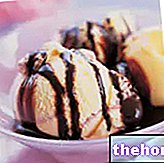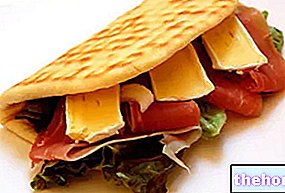What's this ?
In Italy, kataifi s "means a phyllo dough made from flour and water, preformed into thin spaghetti and sold dry in small tangles; it is mainly used to make sweets.

In fact, the noun kataifi (or kadaifi or kunefe) indicates a type of dessert originating from the Greek or Turkish area. In turn, these have their origins in some Levantine recipes, more precisely in Jordan, Lebanon, Israel, Palestine, Syria and Northern Egypt The best known of these desserts is called kanafeh, a food made from kataifi paste, white cheese, syrup, flavorings and pistachios.
Kanafeh is mainly available in three versions:
- Khishnah (a kind of phyllo dough roll filled with Nabulsi cheese)
- Na "ama (a cake made with kataifi dough ground and tempered with other liquid / fatty foods)
- Mhayara (a mixture of the two above).

Nutritional values (per 100 g of edible portion)
In all versions it is necessary to use good quantities of butter or margarine or palm oil. In the khishnah kanafeh, during the last minutes of cooking, syrup, a few drops of rose or orange flower water and a chopped pistachios are poured.
Nutritional Characteristics
Kataifi pasta is a product of vegetable origin (suitable for vegetarian and vegan diets) that belongs to the III group of foods.
Kataifi pasta has a rather high energy intake, mainly provided by carbohydrates, followed by lipids and finally by proteins.
The carbohydrates of the kataifi paste are mainly complex, the monounsaturated fatty acids and the peptides of medium biological value.
Fiber is abundant and cholesterol is absent.
From the mineral point of view, the kataifi paste does not show noteworthy levels, except for the iron which, in any case, does not enjoy an "excellent bioavailability. As for vitamins, good concentrations of thiamine (B1 ) and niacin (PP).
Kataifi pasta does not contain lactose but provides a certain amount of gluten, which is why it does not lend itself to the diet against celiac disease.
By virtue of the caloric content and glycemic load, it is not a particularly suitable food for the diet of the overweight subject, type 2 diabetic and hypertriglyceridemic.
The average portion of kataifi dough depends on the composition of the overall diet.




























